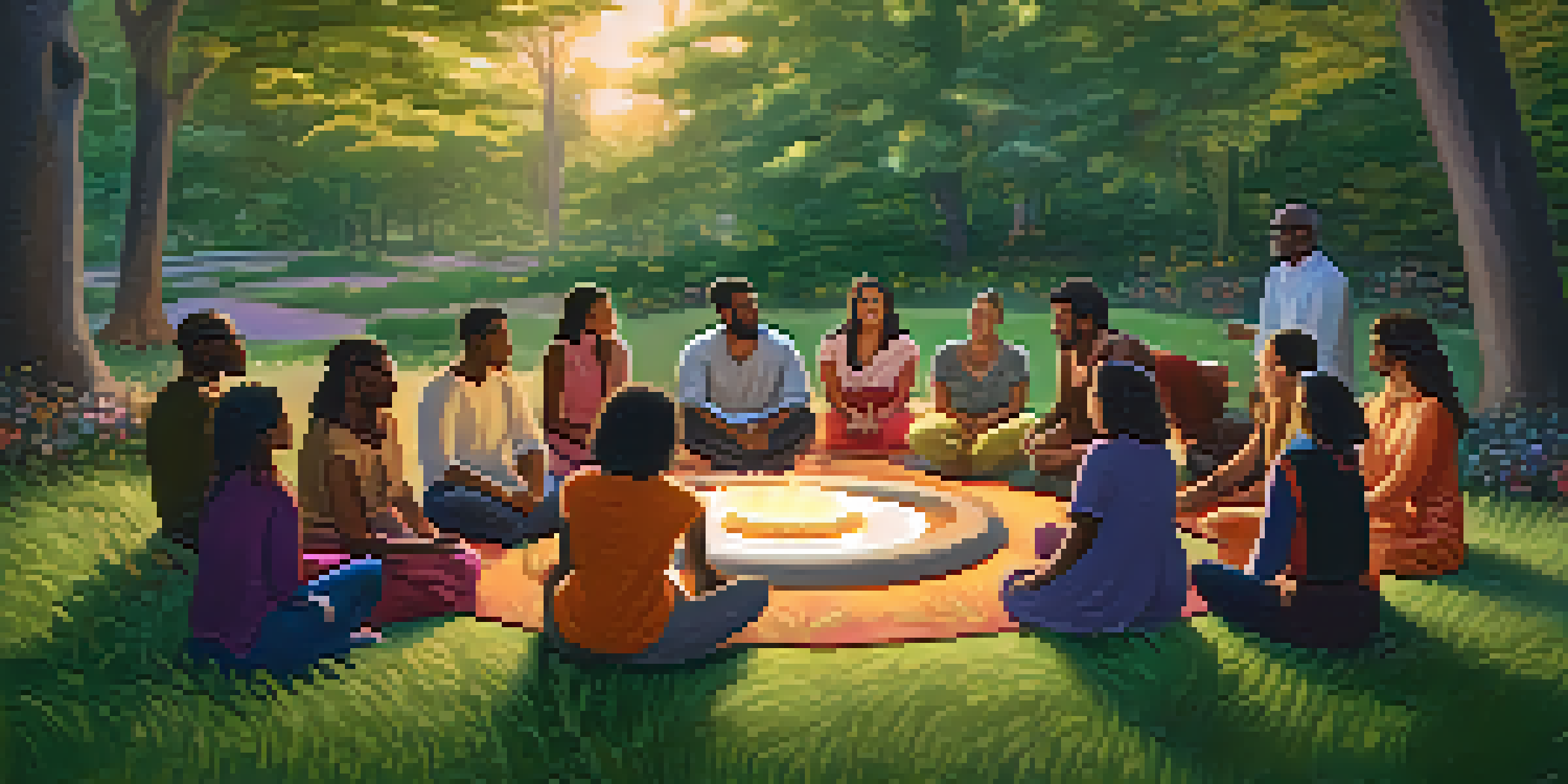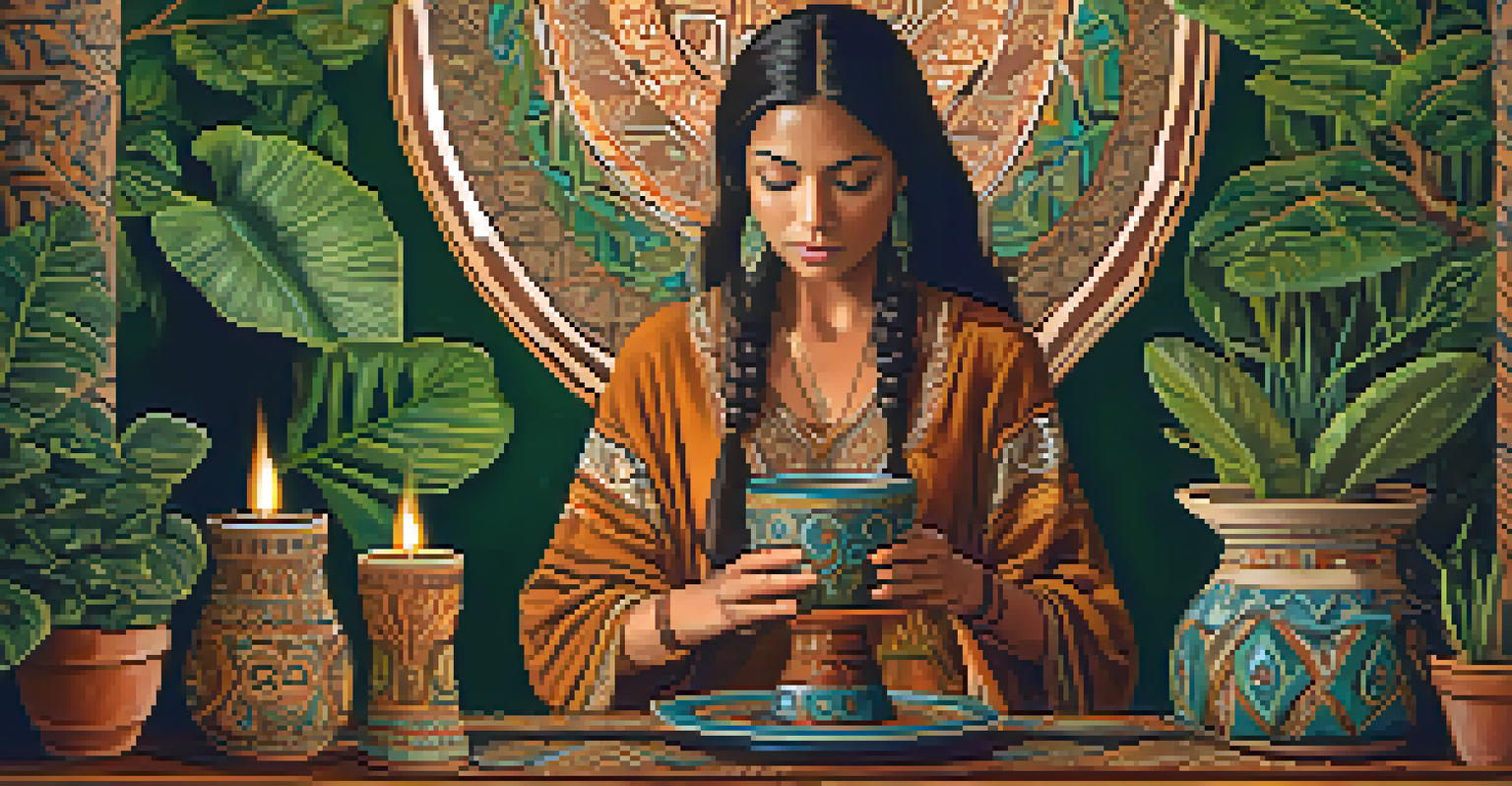Gendered Perceptions of Entheogenic Experiences

Understanding Entheogens: A Brief Overview
Entheogens are substances that can induce altered states of consciousness, often used in spiritual or religious contexts. These include naturally occurring plants like psilocybin mushrooms and ayahuasca. Historically, they have been part of various cultures, enabling deeper connections with the self and the universe.
The journey of self-discovery is often a path that leads us back to our true selves, and entheogens can illuminate that path.
While many people associate entheogens with personal and collective healing, the experiences and interpretations can vary significantly based on gender. For instance, men might approach these substances with a focus on exploration, whereas women often emphasize emotional connection and introspection.
Understanding these distinctions is crucial, as it highlights the need for inclusive dialogues about entheogenic practices. By recognizing how gender influences perception, we can create more supportive environments for everyone engaging with these experiences.
Gender and the Cultural Context of Entheogens
Cultural narratives surrounding entheogens often reflect broader gender norms and expectations. In many societies, men are portrayed as the explorers, seeking adventure and enlightenment, while women may be relegated to roles of nurturers or caretakers. This dichotomy can shape how individuals of different genders engage with entheogenic experiences.

For example, in shamanic traditions, male shamans are often viewed as the primary figures of authority, leading ceremonies and guiding others. In contrast, female practitioners may be seen primarily in supportive roles, despite their deep knowledge and expertise in the use of these substances.
Gender Shapes Entheogenic Experiences
Men and women engage with entheogens differently, with men often seeking adventure and exploration while women focus on emotional healing and introspection.
This cultural framing can lead to the undervaluing of women's experiences with entheogens, perpetuating stereotypes that hinder true understanding and appreciation of diverse perspectives. Recognizing these biases is a first step toward fostering inclusivity in the discourse surrounding entheogens.
Personal Narratives: Women’s Experiences with Entheogens
Women's stories surrounding entheogenic use often emphasize emotional healing and community. Many women report that these experiences allow them to process trauma, build connections, and explore their identities in a safe space. This strong focus on emotional aspects can sometimes contrast sharply with the more adventure-driven narratives often associated with male experiences.
In every community, there lies the power to heal, to embrace vulnerability, and to share our journeys toward wholeness.
For instance, a woman might describe her journey with ayahuasca as a powerful reclamation of self, using the experience to confront past pain and foster growth. This personal narrative highlights how gender shapes the interpretation of these profound experiences.
Sharing these stories can empower other women to seek out entheogenic experiences, validating their feelings and encouraging them to embrace their journeys. This creates a ripple effect, pushing the conversation forward and encouraging more diverse narratives.
Men’s Perceptions: The Quest for Identity and Power
Men's experiences with entheogens often revolve around themes of identity, power, and control. Many men approach these substances in their quest for self-discovery, aiming to break free from societal expectations and redefine their masculinity. This journey can lead to profound insights, but it may also perpetuate a sense of competition among peers.
For example, a man might take psychedelics during a group setting, seeking to achieve a shared peak experience with others. This desire for communal validation can sometimes overshadow the internal journey, leading to a more superficial understanding of the experience.
Intersectionality Influences Access
The experiences of individuals with entheogens are further complicated by intersecting identities such as race and socioeconomic status, which can impact access and interpretation.
It's essential to unpack these narratives, as they can reveal underlying insecurities and pressures that men face. Encouraging honest conversations can help men embrace vulnerability, paving the way for more meaningful entheogenic experiences.
Intersectionality: The Overlap of Gender and Other Identities
Gender is just one facet of identity, and when combined with other aspects such as race, sexual orientation, and socioeconomic status, the perceptions of entheogenic experiences become even more complex. For instance, a woman of color may face unique challenges and biases that impact her access to and interpretation of these experiences.
This intersectional lens allows us to appreciate the multitude of factors influencing how individuals engage with entheogens. It highlights the importance of considering varying cultural backgrounds and personal histories when discussing entheogenic use.
By broadening the conversation to include intersectionality, we can ensure that all voices are heard and validated. This approach fosters a richer understanding of entheogenic experiences, creating a more inclusive dialogue that honors diverse perspectives.
The Role of Community in Shaping Experiences
Community plays a significant role in shaping how individuals experience and interpret entheogens. Supportive networks can create safe spaces for exploration, allowing participants to share their feelings and insights without judgment. This sense of belonging can positively influence the overall experience, especially for those who may feel marginalized.
For instance, women's circles focusing on entheogenic practices often foster a nurturing environment that encourages vulnerability and sharing. This approach can lead to deeper connections and collective healing, reinforcing the importance of community in these journeys.
Community Enhances Healing Journeys
Supportive communities play a crucial role in shaping entheogenic experiences by providing safe spaces for sharing and connection, which can lead to collective healing.
Conversely, male-dominated spaces may inadvertently perpetuate competition and bravado, potentially stifling authentic sharing. Recognizing these dynamics can help create more balanced environments that promote healing for all participants.
Future Directions: Fostering Inclusivity in Entheogenic Spaces
As we continue to explore the landscape of entheogenic experiences, fostering inclusivity should be a priority. This means recognizing and addressing the biases that exist within these spaces, ensuring that everyone's voices are heard and valued. By actively seeking diverse perspectives, we can enrich the conversation around entheogens.
Workshops, community gatherings, and discussions that prioritize inclusivity can create opportunities for individuals from various backgrounds to share their experiences. These platforms can serve as catalysts for change, encouraging more nuanced understandings of gendered perceptions.

Ultimately, creating a more inclusive environment for entheogenic experiences not only benefits individuals but also enriches the entire community. By embracing diversity, we can collectively deepen our understanding of these powerful substances and their potential for healing.